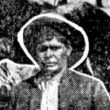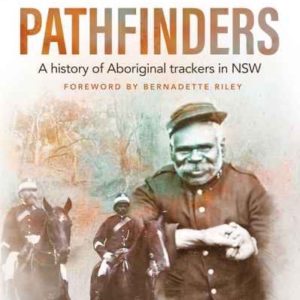Loading map...

The Wiradjuri language was spoken across a wide area of central NSW including long segments of the Murrumbidgee, Lachlan and Macquarie Rivers. It was closely related to the Ngiyampaa language to the west and Gamilaraay to the north. Linguists refer to the three languages as the Wiradjuri group [ref]Mathews 1907; Keen 2004.[/ref]. A distinctive feature of the group was that they began with the term for “no” (“wira”) and concluded with the term for “having” (“djuri”) [ref]Grant and Rudder 2005; Howitt 1904: 108.[/ref].
Wiradjuri spiritual beliefs were organised around a network of sacred sites associated with mythical heroes known as jin [ref]Jin are sometimes referred to as totems and colloquially as “meat”.[/ref]. There were at least 18 Wiradjuri jin and probably many more. Each was associated with a particular animal or plant. Jin were inherited from a person’s mother’s mother along with the responsibility for maintaining associated sites. Wiradjuri people were also divided into four sections. Specific jin were connected to each section and together they regulated the marriage system [ref]The four Wiradjuri sections, also common to Gamilaraay and Ngiyampaa, were Murri, Kubbi, Ippai and Combo (along with their feminine equivalents of Matha, Kubbitha, Ippatha and Butha). To give an example of the marriage rules, Murri emu could marry Ippatha eaglehawk, Ippatha possum, Matha brown snake and Kubbitha native bee (Mathews 1897: 173-174).[/ref]. Stories were told about the travels of jin, the places where they stopped, the social rules they set down and the features of the landscape which they made. Individuals learned the stories, songs and dances of their jin and were not allowed to eat or damage them. They became the embodiment of them. Wiradjuri people also worshipped several mythical heroes in common, including Biami, his emu wife Gooboerangalnaba and the giant serpent Kurrea. Biami and the others also travelled and created; some stories told of their interactions with jin [ref]Mathews 1895, 1897, 1898; for general information on totems, see Gammage 2011: 125-129.[/ref].
Written by James Rose (NTSCORP Senior Anthropologist)

 This website explores the history of Aboriginal trackers in NSW from 1862 when the current NSW Police Force was established through to 1973 when the last tracker, Norman Walford, retired. You can read about the lives of individual trackers and some of the incredible tracking feats they...
This website explores the history of Aboriginal trackers in NSW from 1862 when the current NSW Police Force was established through to 1973 when the last tracker, Norman Walford, retired. You can read about the lives of individual trackers and some of the incredible tracking feats they...

There were over 200 NSW police stations that employed Aboriginal trackers between 1862 and 1973. Many were concentrated in the central-west and north-west of the state, the agricultural and pastoral heartland of NSW. This is because one of the main jobs of trackers was to pursue sheep, cattle and horse thieves. Trackers sometimes lived in small huts out the back...
Learn More ►
Pathfinders book Pathfinders, A history of Aboriginal trackers in NSW, written by Dr Michael Bennett and published by NewSouth, is now available from all good bookstores. Click on the link below to order your copy. https://www.abbeys.com.au/book/pathfinders-a-history-of-aboriginal-trackers-in-nsw.do Early History Since the beginning of the colony, government agencies, explorers, surveyors and members of the general public called upon the tracking...
Learn More ►